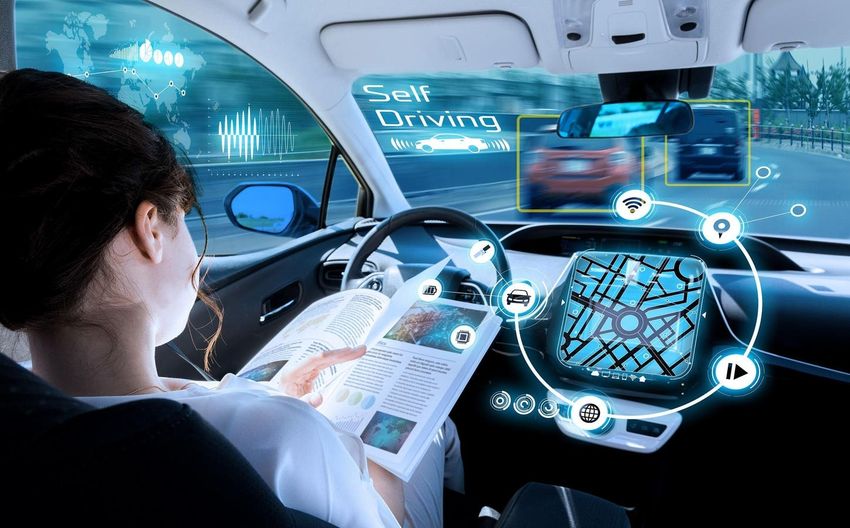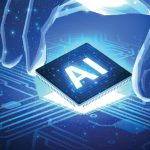Artificial Intelligence (AI) has revolutionized the transportation industry by enabling autonomous vehicles, including self-driving cars and drones. These intelligent machines leverage AI technologies such as machine learning, computer vision, and sensor fusion to navigate environments, make real-time decisions, and improve safety and efficiency. This article explores how AI is powering autonomous vehicles, the challenges involved, and the future of this transformative technology.
1. AI in Self-Driving Cars
Self-driving cars use a combination of AI-driven technologies to perceive their surroundings, analyze data, and execute driving maneuvers safely. The core AI components of autonomous vehicles include:
a. Perception & Sensing
Autonomous cars rely on an array of sensors, including:
- LiDAR (Light Detection and Ranging): Provides a 3D map of the surroundings.
- Radar: Detects objects, their speed, and distance.
- Cameras: Identify road signs, lane markings, pedestrians, and other vehicles.
- Ultrasonic Sensors: Help in short-range object detection and parking.
These sensors feed data into AI-driven perception systems, which use deep learning algorithms to classify objects, predict their movements, and make decisions.
b. Decision-Making & Control
AI models, particularly reinforcement learning and neural networks, help autonomous vehicles:
- Interpret sensor data to understand road conditions.
- Predict actions of other road users using behavioral modeling.
- Plan optimal routes by analyzing traffic and road constraints.
- Control vehicle movements (acceleration, braking, steering) using real-time feedback loops.
c. AI in Navigation & Mapping
- Simultaneous Localization and Mapping (SLAM): AI algorithms create real-time maps and position the vehicle accurately.
- GPS & High-Definition (HD) Maps: Provide precise road details and geospatial data.
- Path Planning Algorithms: Use AI to optimize driving routes, avoid traffic congestion, and enhance fuel efficiency.
d. Safety & AI Ethics
- AI enhances safety by detecting potential collisions and applying emergency brakes.
- Autonomous vehicles must handle edge cases, such as unexpected pedestrian movement.
- Ethical AI decision-making in accident scenarios remains a significant challenge.
2. AI in Drones
AI-powered drones, also known as Unmanned Aerial Vehicles (UAVs), are transforming industries like logistics, surveillance, agriculture, and disaster response.
a. AI-Based Navigation & Flight Control
Drones utilize AI for:
- Obstacle Detection & Avoidance: Computer vision and deep learning models help drones maneuver safely in complex environments.
- GPS & Sensor Fusion: AI integrates data from GPS, gyroscopes, and accelerometers for stable flight.
- Autonomous Flight Planning: Machine learning enables drones to plan routes dynamically, adjusting to obstacles and weather conditions.
b. AI in Object Recognition & Surveillance
- Facial & Object Recognition: Drones use AI-powered computer vision to identify people, vehicles, and objects.
- Real-Time Data Processing: AI models analyze aerial footage for applications such as traffic monitoring and wildlife tracking.
- Security & Defense: Military and law enforcement agencies use AI drones for reconnaissance and surveillance missions.
c. AI in Delivery Drones
Companies like Amazon, UPS, and Wing (Google) are developing AI-driven drones for package delivery. AI enables:
- Automated Parcel Pickup & Drop-Off
- Dynamic Route Optimization
- Weather Adaptation & Collision Avoidance
3. Challenges & Limitations of AI in Autonomous Vehicles
Despite rapid advancements, several challenges hinder the widespread adoption of AI-powered autonomous vehicles:
a. Safety & Reliability
- AI models must perform reliably under adverse weather conditions, such as rain, fog, and snow.
- Handling unexpected road scenarios, such as erratic drivers and road construction, remains challenging.
b. Ethical & Legal Concerns
- How should an AI-powered vehicle react in accident scenarios involving moral dilemmas?
- Who is liable for accidents caused by autonomous vehicles?
- Regulatory frameworks need to standardize AI governance for self-driving technology.
c. AI Bias & Data Limitations
- AI models can be biased if trained on incomplete or skewed datasets.
- Ensuring diverse, high-quality training data is critical to avoid safety risks.
d. Cybersecurity Risks
- Autonomous vehicles are vulnerable to hacking and cyber-attacks.
- AI-driven security protocols are necessary to protect against data breaches and malicious control overrides.
4. Future of AI in Autonomous Vehicles
The future of AI-driven autonomous vehicles is promising, with ongoing innovations in:
a. 5G & Edge Computing
- 5G networks will enable ultra-fast AI-driven decision-making with low latency.
- Edge computing will allow AI models to process data locally, improving real-time performance.
b. V2X (Vehicle-to-Everything) Communication
- AI-powered vehicles will communicate with each other, traffic signals, and infrastructure for improved coordination.
c. Advanced AI Models & Quantum Computing
- AI models will evolve to handle complex, multi-agent interactions in real-world driving.
- Quantum computing could enhance AI algorithms for rapid decision-making in self-driving cars and drones.
d. Fully Autonomous Urban Transport
- AI-driven robotaxis and self-driving public transportation will reshape urban mobility.
- AI-powered aerial taxis (urban air mobility) will revolutionize smart cities.
Conclusion
AI has enabled incredible progress in autonomous vehicles, from self-driving cars to drones. While challenges remain in safety, regulation, and AI bias, advancements in AI models, 5G, and V2X communication will drive the future of intelligent transportation. With continued innovation, autonomous vehicles will enhance efficiency, reduce accidents, and revolutionize mobility worldwide.


